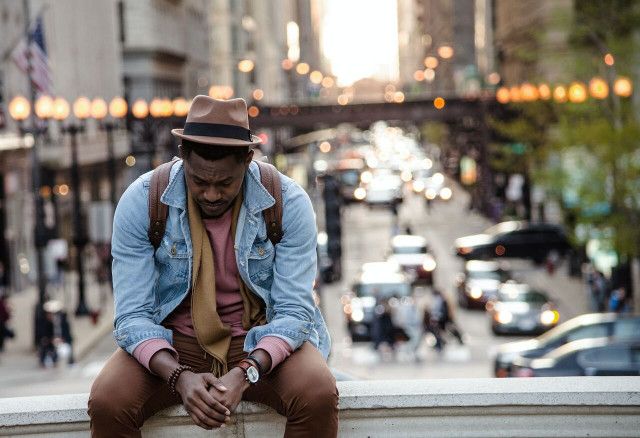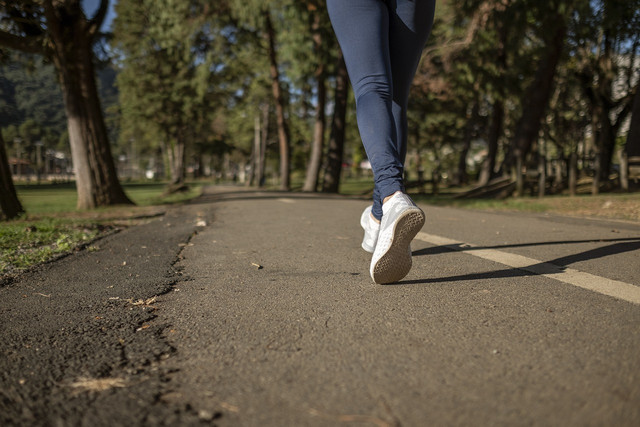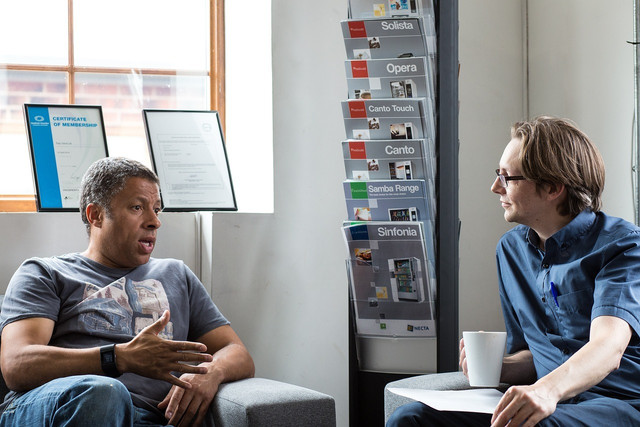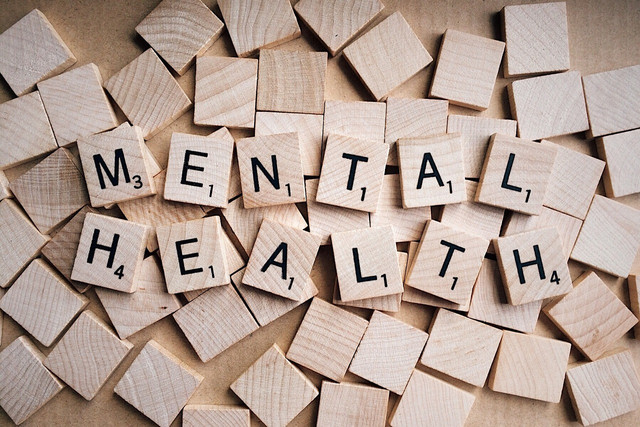Learning how to help someone with social anxiety could bring healing and reassurance to those suffering from this debilitating disorder. Find out how with our evidence-based tips.
Learning how to help someone with social anxiety might benefit more people than you realize because it is a common issue in the US. An estimated 7.1 percent of American adults had a social anxiety disorder in the past year — with more females than males affected.
In fact, an estimated 12.1 percent of U.S. adults experience social anxiety disorder at some point in their lifetimes. Knowing how to help someone with social anxiety will give you the skills and knowledge to support these people through challenging and stressful situations.
What Is Social Anxiety?

(Foto: CC0 / Unsplash / Benjamin Voros)
Social anxiety — also known as social phobia — is an anxiety disorder that is characterized by persistent fear of one or more social situations that result in the person fearing (and/or suffering) anxiety symptoms that will be embarrassing and humiliating. It generally occurs in situations whereby the person may be scrutinized, evaluated, or judged by others.
Typical situations include those that involve social interactions, observation and performance — which encompass almost all social situations we would usually face in our daily lives. Social anxiety can vary in severity from mild to severe — and can be devastating for many. It can affect work, school, and many other daily activities. Common triggers include:
- public speaking
- new job/school
- dating
- meeting new people
- shopping
- weddings/parties
Signs and Symptoms
Many of the signs and symptoms of social anxiety disorder mimic the signs and symptoms of stress — because both trigger an automatic physiological reaction known as the fight or flight response (or stress response) — which is the body’s natural reaction to a perceived threat. These symptoms include:
- blushing, facial flushing, sweating, shaking/trembling
- anxiety and a feeling of impending doom
- rapid heart rate/palpitations
- the mind “going blank”
- nausea or gut disturbances
- muscle tension
- find it difficult to make eye contact
- feeling self-consciousness or fearful
- avoiding social interactions
Help Without Judgement



(Foto: CC0 / Pixabay / SeaReeds)
The best way to help someone with social anxiety is without judgment. To many of us, social phobias are irrational — but to the sufferer, these fears are very real. It’s important to remember that the fight or flight response is triggered by fear — whether it is rational or not. The brain doesn’t care if you are afraid of a social situation or an approaching wild animal — it will respond to the emotion of fear — not the actual trigger.
This natural bodily response to fear can actually override the rational and logical centers of the brain — making it even more difficult for the socially anxious person to think in a rational and logical way. It also promotes tunnel vision — which results in focusing on the perceived threat — which in turn fuels even more anxiety.
This cycle of a perceived threat, fear and anxiety, and the fight or flight response are difficult to break because of the body’s innate reactions. So, stop your own rational mind stepping in — and suppress the urge to say “There’s nothing to worry about” or “Calm down.” In fact, suppress the urge to say anything at all and just listen.
Tip: Learning how to be a stoic can help reduce stress long-term.
How to Help Someone with Social Anxiety in the Short-Term: 1. Stop, Look and Listen



(Foto: CC0 / Unsplash / Aarón Blanco Tejedor)
We usually communicate by talking — which isn’t necessarily the right strategy when trying to help someone with social anxiety. Listening allows the person to voice their anxieties and is often more effective than talking to the person, asking questions, offering advice or giving reassurance. It also helps them to focus on finding words instead of on the trigger. There are several listening types.
Active listening is an excellent way to help someone with social anxiety. It involves more than simply hearing — and requires devoting your full awareness and senses to what is being said. Engaging all of your attention will allow you to hear beyond the words and toward the complete message being conveyed. Some helpful strategies for effective listening include:
- Make eye contact
- Ask follow-up questions
- Be present and attentive
- Don’t interrupt
Deep and empathetic listening involves going a step further. This kind of listening means putting yourself in the person’s shoes in order to understand their experience and emotions — as well as the words and their meanings. It also involves reflecting your understanding back to them, so that they can begin to make sense of their own experience.
2. Embrace Emotions



(Foto: CC0 / Unsplash / whoislimos)
The complex nature of social anxiety disorder is characterized by emotional and attentional imbalances — alongside negative self-beliefs. This connection between how the person is feeling, thinking and ‘talking’ to themselves can become a debilitating cycle. Therefore, helping someone with social anxiety involves addressing all of these aspects. In the acute phase though, just let the person feel and express their emotions and thoughts.
The person’s thoughts may be irrational, but the accompanying emotions — like fear and dread — are very real and often the most crippling part for the sufferer. Allow them to feel their feelings and try to be compassionate in your approach. Understanding the person at an emotional level instead of telling them ‘there’s nothing to be scared of’ conveys understanding — which is an effective way to help someone with social anxiety and build a therapeutic relationship with them. Remember that they struggle with social interaction — so understanding at an emotional level will help them interact with you.
3. Breathe



(Foto: CC0 / Unsplash / Motoki Tonn)
In order to help someone with social anxiety to regain emotional and mental balance — try to induce relaxation — and a return to rational thought. Deep and slow breathing stimulates the vagus nerve — which is the main nerve responsible for calm and balance in the body. It is switched off during the stress response, so stimulating it will help someone with social anxiety during an anxious period.
They could try the 5-4-3-2-1 method or the 4-4-4 box-breath method (in for 4 seconds, hold for 4 seconds, and release for 4 seconds) — or simply count each breath cycle while mindfully focusing on the breath as it enters and leaves their body. This focus on the breath will also distract them from their irrational thoughts, perceptions — and subsequent fear.
4. Distraction



(Foto: CC0 / Unsplash / Alexander Grey)
Distractions can help someone with social anxiety because — like focusing on the breath — they switch the person’s focus from fear to other things. This, in turn, switches off the trigger for the fight or flight response. You could take the person for a walk, make a puzzle, watch something funny, or engage in some form of distraction.
The 5-4-3-2-1 grounding technique is an evidence-based tool that helps to bring the person into the safety of the present moment through the senses. To use this technique to help someone with social anxiety, ask them to point out:
- FIVE things they can see
- FOUR things they can touch
- THREE things they can hear
- TWO things they can smell
- ONE thing they can taste
5. Help Them to Self-Soothe



(Foto: CC0 / Pixabay / Fotorech)
Self-soothing techniques involve engaging in a behavior to relieve the aftermath of a negative event or experience. According to some experts, these techniques can be used to help someone with anxiety as well autism spectrum disorder, depression and complex trauma, among other conditions. Self-soothing techniques can range from going for a jog to self-touch.
Even just sipping some cold water will stimulate the vagus nerve via the swallow reflex and help return the person to a more calm and balanced state. Check out our 8 top self-soothing techniques to stay calm under pressure.
How to Help Someone with Social Anxiety in the Long-Term: 1. Finding Professional Help



(Foto: CC0 / Pixabay / jamesoladujoye)
Social anxiety can be crippling for some people — so it’s important to recognize your own limitations in helping someone. Many sufferers require professional treatment, and you can help someone with social anxiety to find the right therapy and approach for them to support them in the long term.
Cognitive behavioral therapy (CBT) is thought to be the most effective type of psychotherapy for social anxiety. Multiple studies have scientifically proven mindfulness-based stress reduction to reduce perceived and biological stress in a variety of situations. Research also suggests that mindfulness can reverse the harmful effects of negative self-talk and can be as effective as CBT in treating social anxiety. Check out our article on how to find a therapist in 6 steps for some more guidance.
2. Exposure



(Foto: CC0 / Pixabay / Alexas_Fotos)
Many therapists use exposure to help someone with anxiety. This might also be something you could support the person through. The use of exposure involves rating avoidance situations and fear around them from lowest to highest. The person will then gradually be exposed to feared situations — starting with mild fear — and encouraged to stay in the feared situation for as long as they can or until the fear dissipates. Exposure can be extremely daunting for someone with social anxiety. Therefore, being patient and supportive is key.
3. Lifestyle Changes



(Foto: CC0 / Pixabay / WOKANDAPIX)
There are many scientific ways to reduce the stress response — whether it is triggered by social anxiety or other factors. Supporting the person towards engaging in some of these should help to improve their coping mechanisms in the long term. There are many ways to lower your cortisol naturally — which is the hormone that drives chronic stress in the body. Sharing some of these will help someone with social anxiety in the long run.
1. Eat well
You could advise the person to avoid emotional eating and try some foods that lower cortisol — like dark chocolate and wild garlic.
2. Exercise often
Physical activity has been shown to be an effective way of managing social anxiety. Exercise has the unique ability to both exhilarate and calm. Research shows that while exercise initially spikes the stress response in the body, people experience lower levels of stress hormones like cortisol and epinephrine after bouts of physical activity. This is why regular exercise will help someone with social anxiety in the long term.
Support the person towards the benefits of a morning workout, the benefits of walking, or slow jogging. They might even like to combine some physical activity and mindfulness by trying mindful walking or yoga alternatives for mindful exercise.
3. Self-care
Taking time for yourself and engaging in self-care is key to minimizing stress and anxiety in life — regardless of the triggers. Help someone with social anxiety to become completely relaxed away from social situations to guild inner strength as they journey towards recovery. Some nature therapy might help them recharge.
4. Affirmations
Affirming and reaffirming could help someone with social anxiety. Repeating positive affirmation phrases (either out loud or mentally) like “I am safe” or “I am not afraid” can reinforce a sense of security — particularly during challenging episodes.
Read more:
- How Much REM Sleep Do You Need – And How Can You Get More?
- Best Morning Routine: 10 Tips for Healthy Morning Rituals That Will Kickstart Your Day
- How to Reduce Stress: 7 Ways to “Decelerate” Your Life
Do you like this post?








